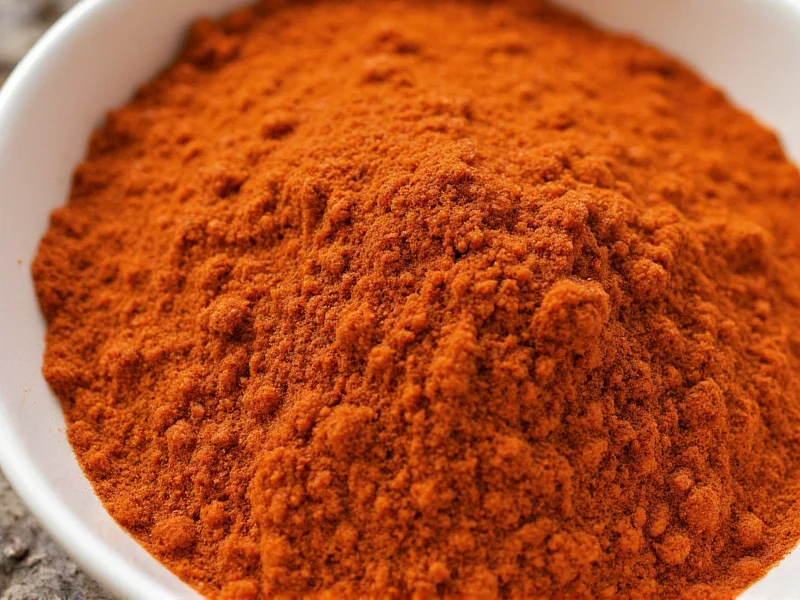When people ask is mesquite spicy, they're usually wondering whether this popular smoking wood creates a hot sensation similar to chili peppers. The answer is clear: mesquite delivers flavor complexity without any capsaicin-induced burn. Understanding this distinction helps home cooks and barbecue enthusiasts use mesquite appropriately in their culinary creations.
What Exactly Is Mesquite?
Mesquite refers to several species of hardy trees in the Prosopis genus, native to arid regions of the Americas. The wood from these trees has become prized in barbecue culture, particularly in Texas-style smoking traditions. Mesquite beans also get ground into flour, but when people discuss mesquite flavor in cooking, they're typically referring to the wood used for smoking.
Mesquite Flavor Profile Explained
Mesquite wood produces a strong, distinctive smoke flavor characterized by:
- Sweet notes - reminiscent of caramel or molasses
- Earthy undertones - similar to roasted coffee beans
- Moderate smokiness - more intense than applewood but less aggressive than hickory
- No heat - absolutely zero spiciness in the capsaicin sense
The misconception that mesquite wood is spicy likely stems from:
- Confusing "spicy" (as in bold flavor) with "spicy" (as in hot)
- Misunderstanding mesquite's robust flavor as heat
- Association with Southwestern cuisine that often includes actual spicy ingredients
| Wood Type | Flavor Intensity | Sweet Notes | Best For |
|---|---|---|---|
| Mesquite | Strong | High | Beef, game meats, short smoking times |
| Hickory | Very Strong | Moderate | Pork, ribs, longer smokes |
| Applewood | Mild | High | Poultry, fish, vegetables |
| Oak | Moderate | Low | Versatile, all meats |
Why Mesquite Gets Misunderstood as Spicy
The term "spicy" creates confusion because it has multiple meanings in culinary contexts. When someone asks does mesquite have heat, they're using "spicy" to mean capsaicin-induced burning sensation. However, food professionals often use "spicy" to describe complex, bold flavors unrelated to heat.
Mesquite's robust flavor profile can be intense, especially compared to milder woods like apple or cherry. This intensity sometimes gets mislabeled as "spicy" by casual observers who don't distinguish between flavor strength and actual heat.
Proper Uses for Mesquite Wood
Understanding that mesquite isn't actually spicy helps you use it correctly:
- Short smoking sessions - Mesquite burns hot and fast with intense flavor, making it ideal for quick smokes (under 2 hours)
- Red meats - Pairs exceptionally well with beef, venison, and other strong-flavored meats that can handle its bold profile
- Avoid delicate foods - Its strong flavor overwhelms poultry, fish, and vegetables
- Mix with milder woods - Many pitmasters blend mesquite with oak or pecan to moderate its intensity
Mesquite Flour: Another Dimension
Mesquite beans get ground into a gluten-free flour that's naturally sweet with caramel notes. This flour:
- Contains no heat-producing compounds
- Has a low glycemic index
- Provides earthy sweetness to baked goods
- Often used in Southwestern cuisine as a flavor enhancer
When people wonder is mesquite spice hot, they might be conflating mesquite flour with actual spices. The flour contributes flavor complexity without any spiciness.
How to Describe Mesquite Accurately
Instead of calling mesquite "spicy," more precise descriptors include:
- Robust
- Earthy
- Sweet-smoked
- Intense
- Caramel-like
Using accurate terminology helps avoid confusion, especially for those learning about mesquite wood flavor characteristics or exploring smoking woods comparison.
Common Misconceptions About Mesquite
Beyond the spicy confusion, several other myths persist:
- Mesquite always creates bitter smoke - Only true when burned at high temperatures; proper low-and-slow smoking yields clean flavor
- All mesquite is the same - Different species (honey mesquite vs. screwbean mesquite) have varying flavor intensities
- Mesquite works for everything - Its strong flavor dominates delicate foods, making it unsuitable for many applications
Practical Tips for Using Mesquite
When working with mesquite, keep these guidelines in mind:
- Use mesquite chips for shorter cooks, chunks for longer sessions
- Soak wood for 30-60 minutes before using to prevent flaming
- Start with small amounts - you can always add more smoke
- Combine with milder woods for balanced flavor profiles
- Avoid green (unseasoned) mesquite wood, which creates unpleasant flavors











 浙公网安备
33010002000092号
浙公网安备
33010002000092号 浙B2-20120091-4
浙B2-20120091-4